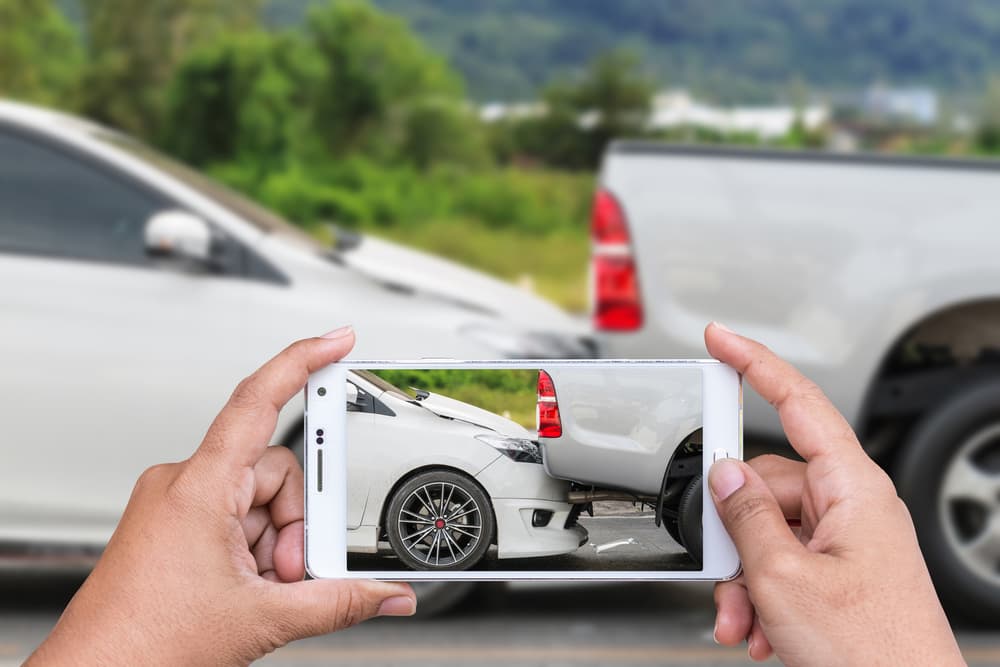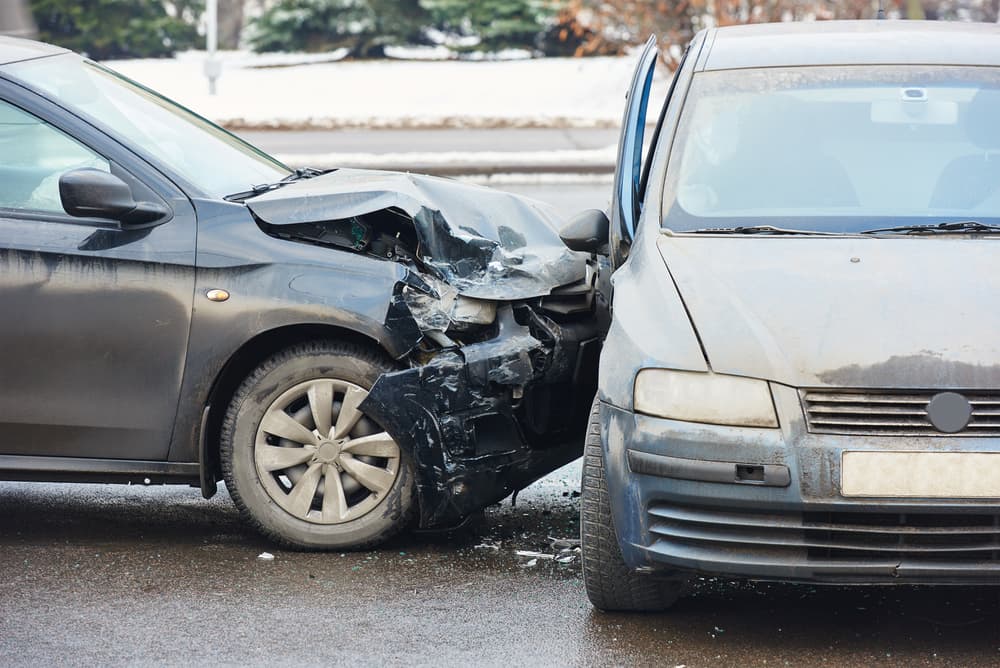Types of Car Accidents
Over 280 million cars in the United States travel more than 3.2 trillion miles each year. Over the past few decades, the prevalence of passenger vehicles has been increasing steadily year by year. However, passenger vehicles also have to share the roadways with other types of vehicles, including motorcycles and trucks. With so many vehicles on our roads, car accidents can happen in several ways.
Accidents can disrupt people’s lives who may face costly medical expenses and no means of paying for them. Fortunately, regardless of what type of car accident you were in, you might be entitled to financial compensation for all the losses and hardships that are burdening you.
Whenever you’ve been involved in a car accident, it’s essential to reach out to a seasoned Fort Lauderdale car accident attorney for expert legal assistance.
Common Types of Car Accidents

Even though most car accidents are not fatal, they can still leave a lasting physical, emotional, and financial impact on the lives of the victims. Among the most common types of accidents on our roadways are:
- Rear-end collision. This type of crash happens when one car crashes into the back of another car, usually at a stoplight or in stop-and-go traffic. A driver is likely to rear-end another vehicle due to distracted driving behavior like texting or making a phone call while driving.
- Head-on crash. This collision occurs when the front ends of two cars meet face-to-face. Head-on accidents often lead to debilitating injuries or fatalities as the impact is usually the highest compared to other types of car accidents. Head-on crashes usually occur on narrow roads without a median or when a driver loses control of their vehicle and drifts into oncoming traffic.
- Sideswipe collision. A sideswipe collision happens when one vehicle hits or makes contact with the side of another vehicle traveling in the same direction. Sideswipe collisions usually occur when a driver tries to change lanes or drifts out of their lane.
- T-bone (side-impact) crash. T-bone crashes occur when a vehicle is hit on the side by another, usually when running a red light or stop sign. This type of accident can lead to severe injuries or fatalities, especially if the impact happens on the driver’s side.
- Multi-vehicle accident. Multi-vehicle accidents occur when more than two vehicles are involved in a collision. Determining liability in this type of car accident becomes more complicated. A common example of a multi-vehicle crash is when one vehicle rear-ends another and pushes the latter into the car in front.
- Single-vehicle accident. Single-vehicle accidents occur when a vehicle crashes into a stationary object, such as a tree, wall, or guardrail. This type of accident often results from distracted driving, speeding, drug or alcohol impairment, or fatigue.
All car accidents are unique in one way or another. Any car crash has the potential to cause different kinds of injuries, ranging from bruises and whiplash to brain trauma, spinal cord injuries, and loss of limbs.
What Is the Most Dangerous Type of Car Accident?

While any car accident can turn catastrophic in an instant, some crashes have the potential to be more dangerous and deadly than others. Statistically, over 70 percent of all car accidents involve collisions between two or more vehicles, while single-vehicle accidents account for over 21 percent of all accidents in the United States.
As for the most dangerous types of car accidents, statistics show that head-on collisions and side-impact crashes cause more debilitating injuries and fatalities than other crashes. In general, the higher the speed of the vehicles involved, the more serious the injuries vehicle occupants will suffer. Other factors that affect the severity of injuries are the size of the vehicles involved and the impact location.
Car accidents are also more likely to result in fatalities in urban areas. The National Highway Traffic Safety Administration (NHTSA) reported that urban and rural areas accounted for 56 percent and 43 percent of traffic fatalities, respectively.
Driving Behaviors That Increase the Risk of a Car Accident
A car accident is more likely to occur when drivers violate traffic laws and engage in certain behaviors behind the wheel:
- Speeding. When we hurry to get somewhere, the temptation to speed becomes stronger. However, driving above the speed limit is dangerous and increases the likelihood of an accident. It takes longer to stop a car when driving at high speeds, and the faster a driver goes, the greater the impact will be if they collide with another vehicle.
- Running red lights or stop signs. Drivers often ignore traffic lights and stop signs, especially when in a hurry, without realizing that they are putting their lives and the lives of others at risk. This behavior can lead to a head-on collision or side-impact crash, potentially becoming fatal.
- Distracted driving. With the increasing use of smartphones, distracted driving has become a significant issue on U.S. roadways. Drivers who use their phones while driving are not only breaking the law but also putting other drivers and themselves at risk. Statistics show that distracted driving kills more than 3,500 people annually.
- Drunk driving. Driving under the influence of drugs or alcohol is a common factor in car accidents. Alcohol and drugs slow down reaction time and impair judgment, making it difficult for drivers to react to changing road conditions.
- Improper lane changes or turns. Changing lanes or making turns when doing so is prohibited by law or otherwise unsafe can lead to accidents. Drivers should always use their signals and check their mirrors and blind spots before changing lanes or making turns.
- Tailgating. The term “tailgating” refers to the practice of driving behind another car without leaving sufficient distance. Following other vehicles too closely can put the driver and other drivers on the road at risk. This behavior can lead to rear-end collisions, especially when the car in front makes a sudden stop.
- Night driving. Nighttime driving can be challenging, especially for new or inexperienced drivers. Reduced visibility, glare from headlights, and fatigue increase the likelihood of being involved in an accident.
- Drowsy driving. Driving while feeling drowsy or tired is dangerous, as it can impair judgment and reaction time, similar to driving under the influence of alcohol. When feeling fatigued, drivers should always pull over and rest or use alternative transportation, such as requesting an Uber ride.
In some cases, two (or even more) driving behaviors may contribute to car accidents. Understanding how and why the crash happened is crucial when determining who is liable for the accident.
Liable Parties in Car Accidents
Depending on the circumstances surrounding the car accident, any of the following parties may be held accountable for the injuries and damages suffered by victims:
- The vehicle owner (the driver). The person driving the car is typically the first liable party considered. However, the person driving during the accident may not necessarily be the car’s owner. In such cases, the owner is still responsible for the car’s condition and maintenance, which can affect the vehicle’s safety on the road.
- Driver’s employer. The driver’s employer may also be held responsible for a car accident under the doctrine of vicarious liability. This doctrine applies when the driver is operating the vehicle in the course of their employment. If the employer fails to take appropriate measures to ensure driver safety, they can be liable (e.g., requiring drivers to work extremely long hours).
- Vehicle manufacturer. Car accidents do not always occur due to human error but instead due to a fault in the car itself. In such instances, the vehicle manufacturer may be accountable for any damages if victims can prove the crash resulted from a defect in the vehicle rather than inadequate maintenance.
- Government agencies. When a car crash occurs due to poor road conditions or dangerous road design, the government agency that oversees that road may be responsible for the resulting damages to victims. A government agency may also be partially or fully liable when traffic signals do not function properly or traffic signs are missing, unreadable, or installed in an incorrect place.
Because every car accident is unique, it may not be possible to determine who is at fault without the assistance of a lawyer. Your lawyer can conduct a thorough investigation to identify all liable parties and gather enough proof to hold them responsible. Once you identify the liable party, you must start building a legal case against them. This requires you to prove that the party was negligent. “Negligence” means a person failed to use reasonable care. A negligence-based claim against the liable party involves proving four elements:
- Duty of care. You must prove that the other party owed you a duty of care. For example, drivers owe a duty to other drivers to operate a vehicle safely and lawfully.
- Breach. To hold the other party liable, you must demonstrate proof of a breach of duty (e.g., the other driver failed to check their side-view mirrors when changing lanes and hitting your car).
- Causation. You must prove that there is a causal relationship between the other party’s conduct and the accident.
- Damages. Finally, you must prove that you suffered actual damages due to the other party’s negligence.
Establishing the four elements of negligence is no easy task, especially if you do not know where to start. Working with a lawyer can take the stress and burden off your shoulders as you will not have to worry about anything other than your medical treatment and recovery.
Why You Need a Lawyer After a Car Accident
While many car accident victims think they do not need a lawyer to pursue a claim for compensation, the benefits of retaining legal counsel can be substantial and difficult to overestimate. Some of the ways a lawyer can improve the outcome of your legal case include:
Investigate Your Accident and Determine Liability
The success of your claim depends on your ability to prove that the other party was negligent. Determining liability in most car accidents hinges on the four elements of negligence we discussed in the section above. A lawyer experienced in car accidents can gather evidence establishing who was responsible for the accident and who should be held liable for any damages or injuries. They can analyze the information available, such as police reports, medical bills, and witness statements, to build a strong case and increase your chances of receiving appropriate compensation.
Negotiate with Insurance Companies
Sometimes, insurers offer victims of car accidents a quick lump-sum settlement to resolve their case quickly. However, do not be fooled and think that the insurance company genuinely cares about you and wants you to get access to the money you need to pay your bills. Even if the settlement offer seems quite large and generous, as a general rule, the very first offer your insurer makes never fully accounts for all your losses. If you do not understand how much your case is worth, you risk settling for less than you deserve. A lawyer on your side will not let that happen and will handle all communications and negotiations with the insurer to fight for a fair resolution of your claim.
Document Your Injuries and Losses
Injuries, lost income, and other damages can have long-term effects on your life, so you must document them properly and thoroughly. A lawyer can guide you through the process of documenting your injuries and losses and strengthen your claim for compensation.
Help You with Court Proceedings
If your case goes to court, you will need a lawyer who can provide experienced legal representation and advocate for your best interests in the courtroom. They can present your case in court, navigate legal procedures, and protect your rights. A lawyer will also explain the potential outcomes of your case, which allows you to make informed decisions.

David I. Fuchs, Car Accident Attorney
Help You Deal with Psychological Trauma
A car accident can be a traumatizing and frightening experience, which is why having someone you can trust by your side can make things easier from a psychological perspective. If you suffered psychological trauma, your personal injury lawyer can find medical and mental health professionals who can provide appropriate care on a medical lien so you can better cope with the impact of your accident.

